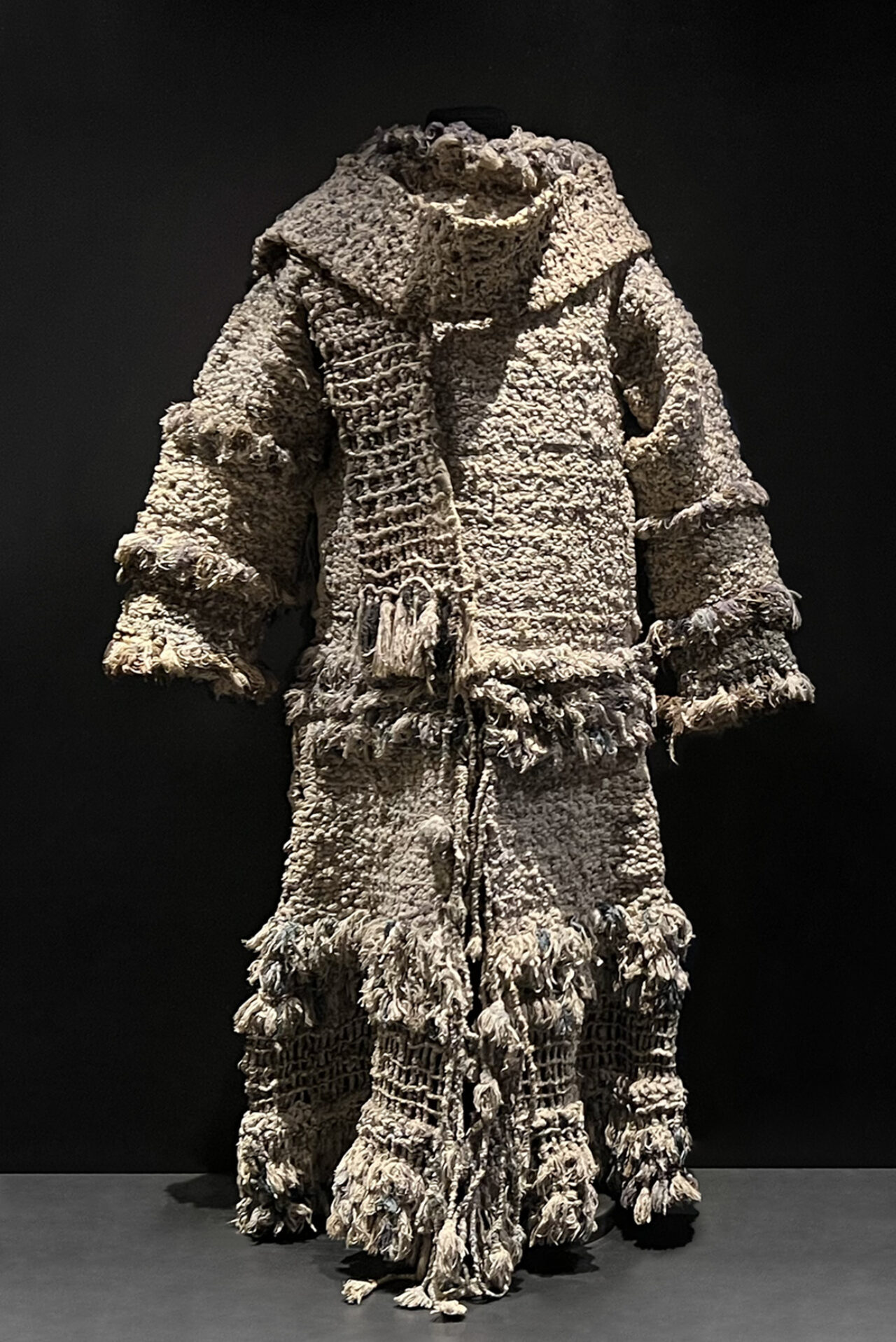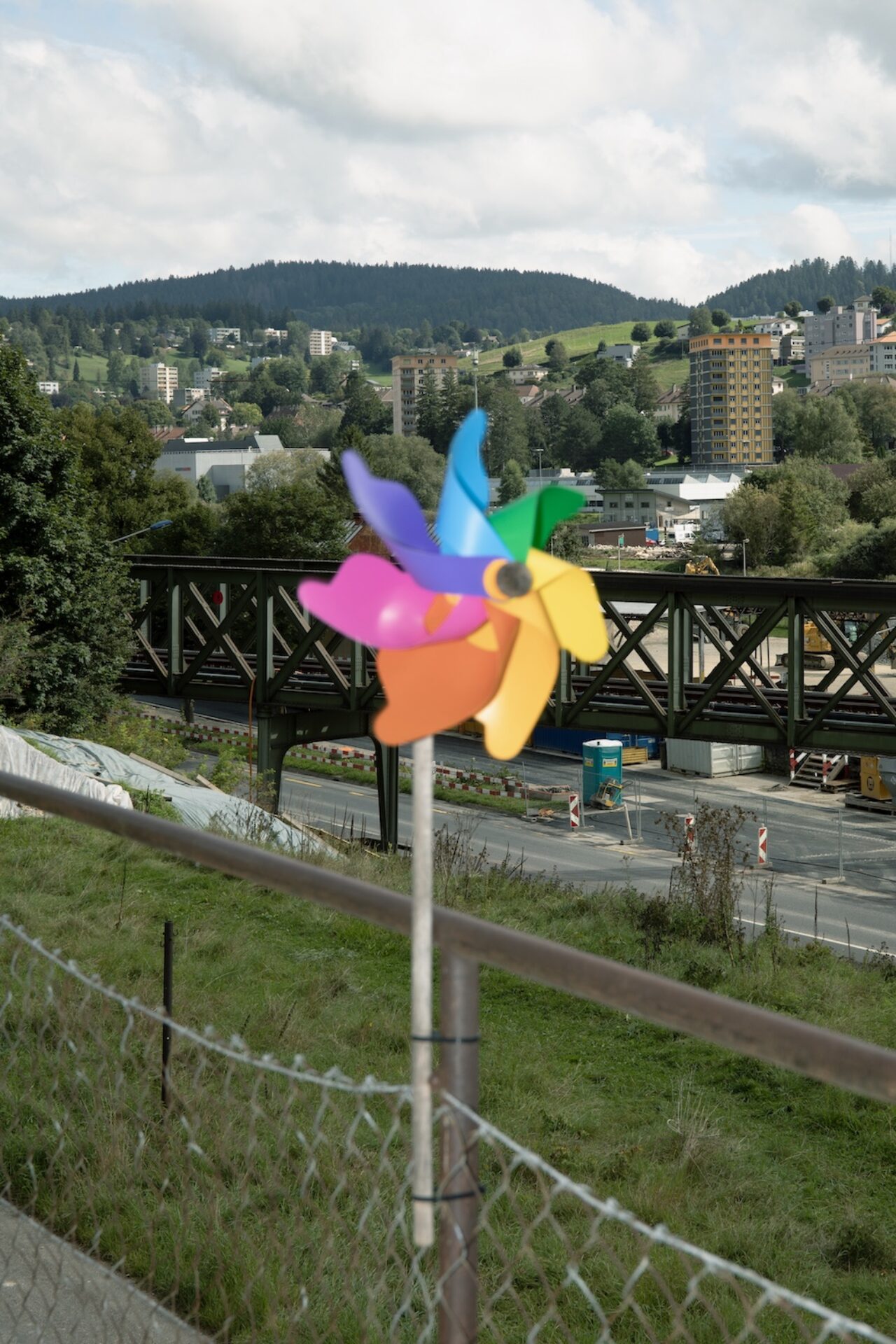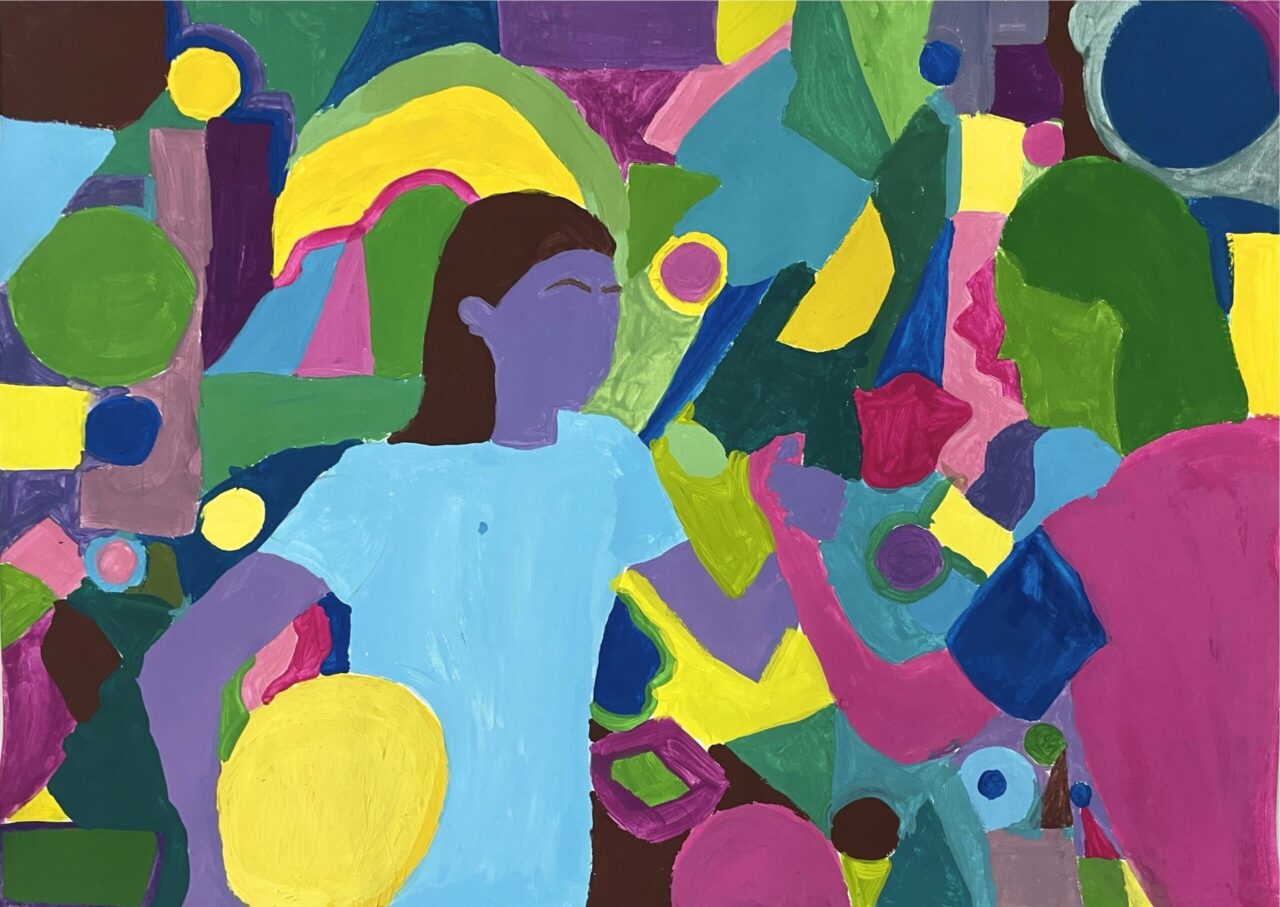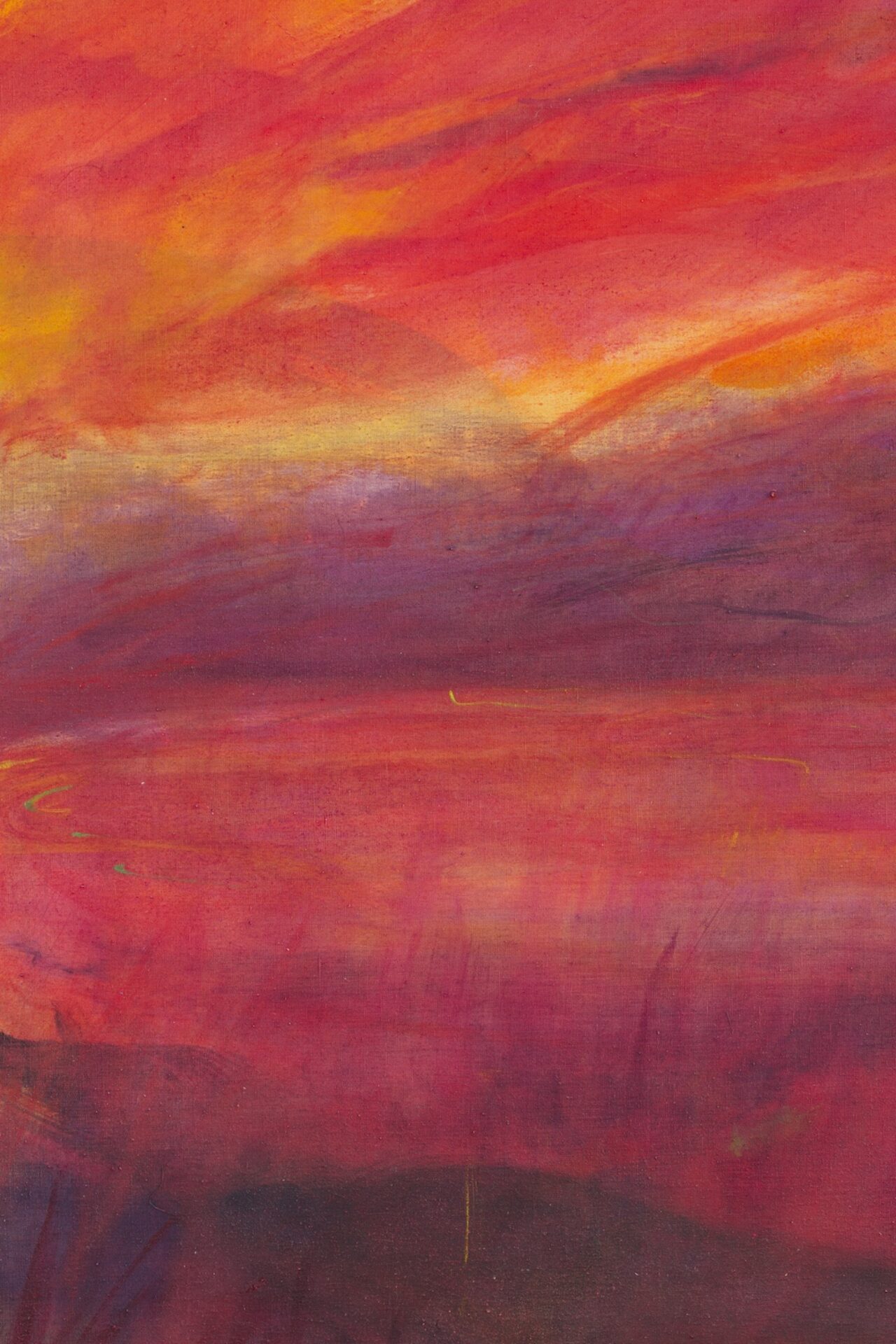Eccentric, maladjusted, deviant, the creators of Art Brut hardly find a place in the community where they cannot or do not want to fit in. They see their raison d’être only in the expression of their fictions : works that they produce as self-taught artists, against the trend, and for which they feel no need for social or cultural recognition or approval.
The singular Art Brut ornaments presented in this exhibition have a strong symbolic significance. Each artist has worn them, making their own body the medium of their expression, except for Kenneth Rasmussen who does not wear his creations. Designed with humble materials, often recovered and transformed, these ceremonial outfits have been sewn, knitted, crocheted, embroidered, woven or painted in a spirit of both enchantment and irony. They have a value of resistance.
Helga Goetze and Giovanni Battista Podestà wear their “preaching” clothes in strange public parades, directly addressing passers-by with the idea of proclaiming moral values. Helga Goetze (1922-2008) goes to the Gedächtniskirche, a church in the heart of Berlin, every day in her costume to denounce inhibitions and taboos and to call for women’s sexual liberation. Her motto “Ficken is Frieden” (fucking is peace) is part of her personal “mythology”, which she embroiders in colour on her coat and cap.
Giovanni Battista Podestà (1895-1974) also protested in the street in a surprising way. He paraded through the small town of Laveno, with a long beard and long hair, wearing a brightly coloured overcoat, a headdress and a cane, exuberantly decorated. He denounces inequality and social injustice, abuse of power and greed, for which he blames modern, materialistic and capitalist society. Through his inventive and transgressive performances, he defends spiritual values and intends to bring a message of redemption.
The parades of Vahan Poladian (1902 or 1905-1982) are equally lavish but solitary, taking place in the streets of Saint-Raphaël in the south of France. They are organised daily to symbolically celebrate the Eastern splendour of his faraway Armenia, from which he was brutally cut off. Wearing his brightly coloured outfits, often glittering and abundantly decorated with festoons, braids, pendants and medals, he accompanies his public outings with an unquenchable laugh. Playfulness and parody are the order of the day.
The humour and delirious creativity are also present in the works of the Danish Kenneth Rasmussen (1972). Bras, panties and penis protectors, knitted and crocheted in excess and extravagance, evoke jubilant sexual finery.
In contrast, Giuseppe Versino (1882-1963) conceived and created his works in the extreme isolation of the vast psychiatric hospital of Collegno in Turin, where he was confined. After completing his cleaning duties, he collected used rags and cloths, washed and frayed them before making cords with which he hand wove and assembled a complete outfit – tunic, trousers or dress, headdress, boots and bag. For the creator who wears his costume in summer and winter, even though it weighs more than forty kilos, this body envelope probably has a protective and conjuring dimension, even a saving one.





